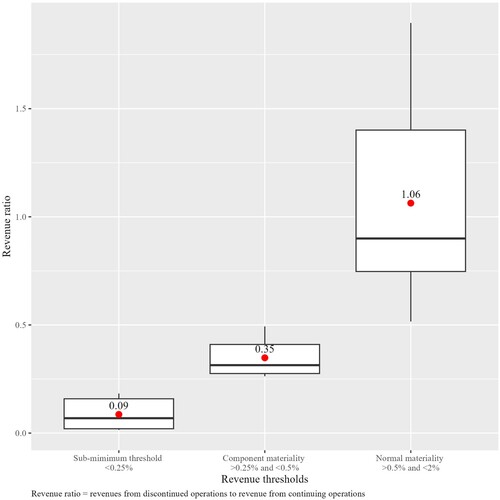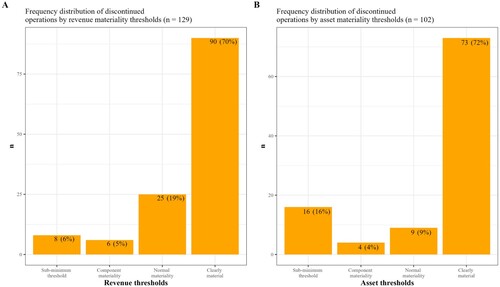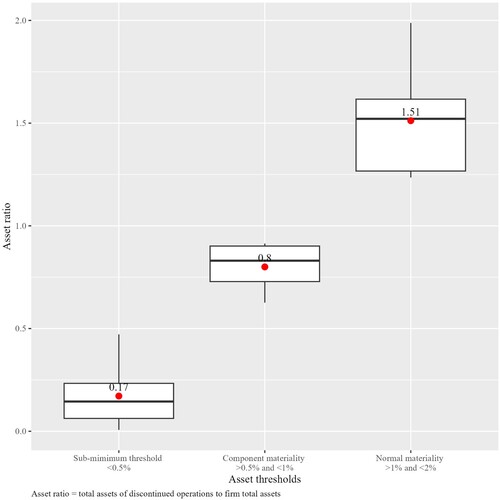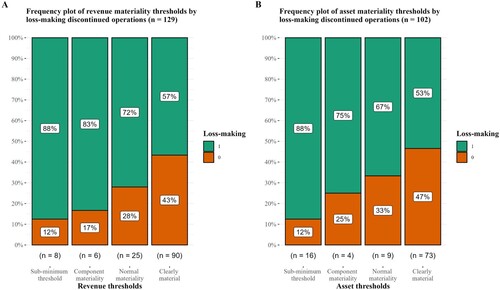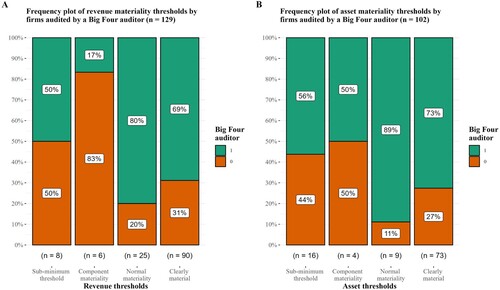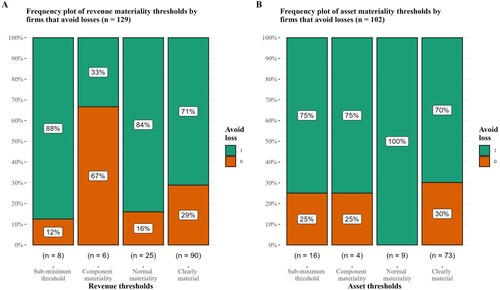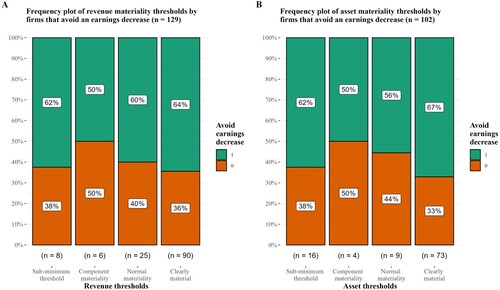Figures & data
Table 1. Sample selection process.
Table 2. Materiality threshold categories used to categorise the size of discontinued operations.
Table 3. Descriptive statistics on the total sample.
Table 4. Descriptive statistics based on revenue thresholds (n = 129).
Table 5. Descriptive statistics based on total assets thresholds (n = 102).
Figure 2. Box plots of the revenue ratios of the bottom three revenue materiality threshold categories (n=39).
